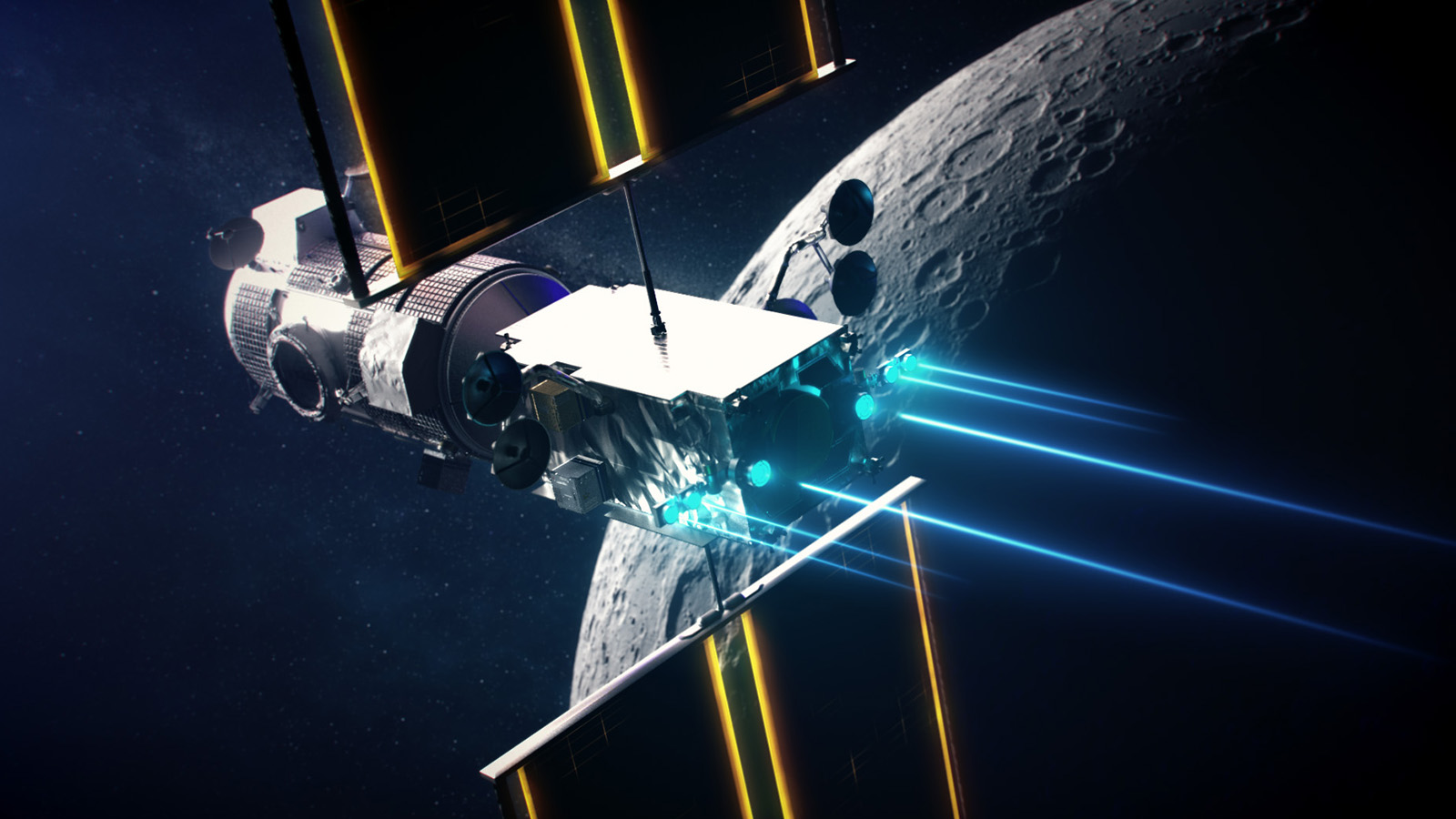Stay Up to Date
Submit your email address to receive the latest industry and Aerospace America news.
The Space Logistics Technical Committee fosters development of integrated space logistics capabilities that enable safe, affordable and routine spacefaring operations
As a critical component of NASA’s Artemis program, the Gateway, an outpost orbiting the moon, will store cargo and have lodging for future human lunar surface activities. In February, NASA awarded a $332 million contract to SpaceX for the Falcon Heavy to launch fundamental components of the Gateway. This mission would deploy the Habitation and Logistics Outpost and the Power and Propulsion Element in 2024 to form the first usable lunar space station. In July, NASA awarded a $935 million contract to Northrop Grumman to develop the HALO module, short for habitation and logistics outpost, which will be a crew cabin for astronauts. Meanwhile, Maxar Technologies is developing the power and propulsion element, which passed the first ground test in March. The Deep Space Logistics Project office at NASA’s Kennedy Space Center in Florida managed the awards for Gateway logistics. After the HALO and power and propulsion element are attached on Earth, SpaceX will launch them from Kennedy.
In April, NASA selected SpaceX’s Starship as the Artemis lunar lander with a $2.94 billion contract. The competitors for this contract, Blue Origin and Dynetics, filed protests to the U.S. Government Accountability Office in the same month, citing “flawed acquisition.” In July, the GAO denied the protest and affirmed the SpaceX award.
Beyond the cislunar plans, experiments on the red planet demonstrated the potential to build a sustainable crewed habitat on the Martian surface. NASA’s Perseverance rover landed on Mars in February, and in April, it extracted the first oxygen from Martian’s carbon dioxide-rich atmosphere. This experiment paved the way for science fiction to become a reality — generating and storing oxygen on another planet to support astronaut activities and help power rockets. At the same time, the Ingenuity Mars Helicopter completed the first powered, controlled flight on Mars, which was also the first flight test on any planet beyond Earth.
Earlier this year members of the space logistics and supply chain management community at NASA Headquarters, Kennedy Space Center, Ames Research Center and the Defense Contract Management Agency created an informal coalition. This group is embracing Digital Ledger Technology and Intelligent Analytics with existing supply chain modeling capabilities for the purpose of performing pre-procurement strategic sourcing evaluations and setting logistics requirements that will safeguard the health of the space industrial base. The capability of obtaining visibility into a program’s industrial base, including the lower-tier suppliers has been achieved. Once the team has completed data sourcing and application programming interfaces by the end of fiscal 2022, simulations or “war games” will be performed to optimize system support, supplier viability, product quality, on-time delivery and obsolescence mitigation cost.
In academia, the Space Systems Optimization Group at Georgia Tech developed a dynamic network framework for on-orbit servicing, assembly and manufacturing. Funded by DARPA, the work enables holistic optimization on operations scheduling, logistics planning and infrastructure design for future satellite servicing missions. Also, the Massachusetts Institute of Technology and Stevens Institute of Technology developed an open-source, cloud-based platform named SpaceNet Cloud for multimission space campaign analysis and evaluation. This work aimed to establish a model-based engineering workflow in future space logistics campaign planning through application programming interfaces and modular, web-based services.
Contributors: Goran Bencun, Craig Bennet, Vince Cappello, Michael C. Galluzzi and Parimal “PK” Kopardekar
Stay Up to Date
Submit your email address to receive the latest industry and Aerospace America news.




